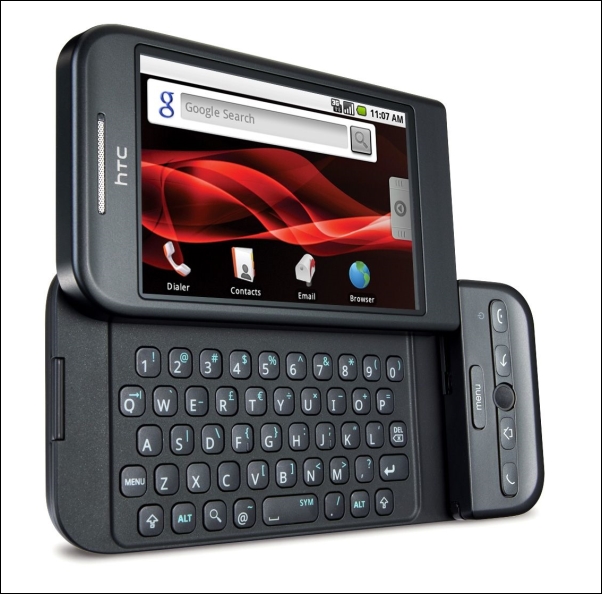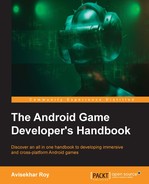As we discussed earlier, the main development target for any game developer on the Android platform are Android mobiles. We have also noticed the various technical specifications for Android mobiles. When a game developer targets this platform at its maximum possible scope, they must take a note of the device category.
Mostly, all Android devices support a common touch interface, a physical Home button, a physical Lock button, a Back button, and volume Up-Down keys for user interaction. Besides these, an accelerometer can be also a good medium for the user interface.
Gaming is mostly visual, so game developers should always look for the graphic performance of the device. There is a separate graphics processor in the latest Android mobiles, but the quality varies.
Visual excellence does not depend on GPU only—the display screen quality also matters a lot. Low PPI screens cannot deliver a high quality display. The first-generation Android G1 mobile had a screen resolution of 240x320, falling in the LDPI resolution category. Hence, the visual quality of the game could not be excellent, no matter how hard the developer tried. Fortunately, with time, device manufacturers put in a lot of effort in to improving the visual quality along with performance. But this feature came with a price of battery life. The more quality it gained, the more battery it consumed.
Previously, few Android phones (for example, Android HTC Dream G1) had a physical QWERTY keypad. This made it much easier to port the game control system from Symbian or BlackBerry to Android (image source: http://s.androidinsider.ru/2015/02/[email protected]):

Nowadays, the control system for Android games has changed completely to cope with the control style of other smartphone games in the market.
In the current scenario, the average capacity of a mobile battery is around 2750 mAh. A few manufacturers provide higher battery capacity by reducing the display quality. It is not possible to increase battery capacity beyond a certain limit due to the physical size and weight constraints for a mobile device.
Targeting the maximum devices is always a good idea as long as the balance between performance and gaming experience is maintained.
The device market is open for various devices. Although old configurations are not being manufactured further, those devices are not yet obsolete. This is why developers have a minimum requirement for their games.
Smartphones are the major target for any game development organization. The increasing user base and upgrading of Android helps this platform grow faster. There was a time when BlackBerry was considered to be the only smartphone. But the current market says that times have changed, and so have the developers.
For Android mobile game development, a developer should keep in mind the following constraints and features:
- Small display area
- Wide range of resolution and pixel density
- Full-screen multitouch interface
- Sensor support for gyro, accelerometer, compass, ambient light, and so on
- Wide range of RAM
- A variety of processors and performance
- Battery life
- More chances of interruption
Android mobiles are one of the more profitable platforms now. When it comes to market share, there is no other mobile OS that can compete with Android. So, developers always jump into Android. Few economical reasons for the success of this platform are as follows:
- Availability of a massive user base, which attracts advertisers as an advertising platform
- Easy monetary transactions through well-established stores
- Ease of cross promotion of games and apps
